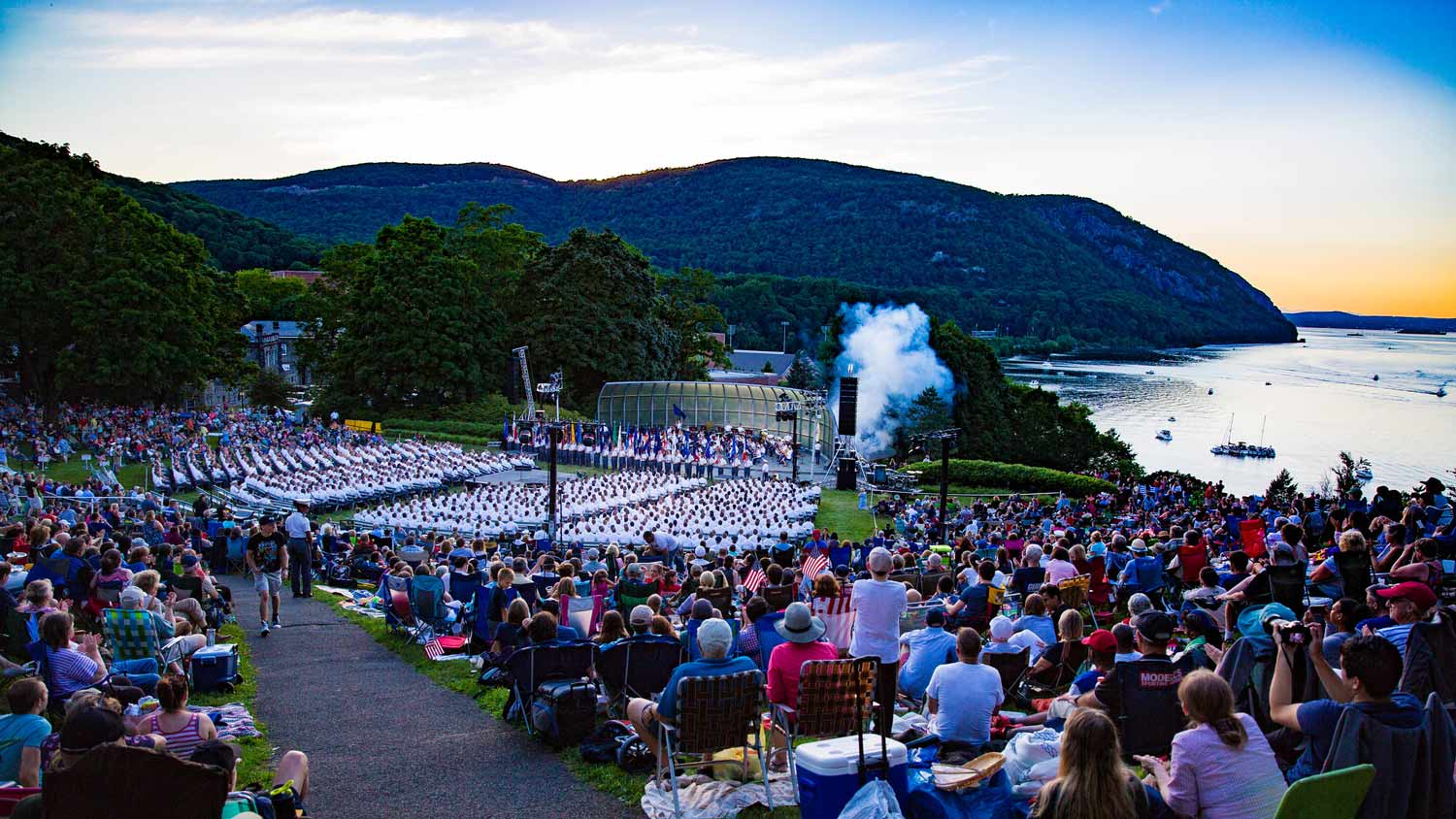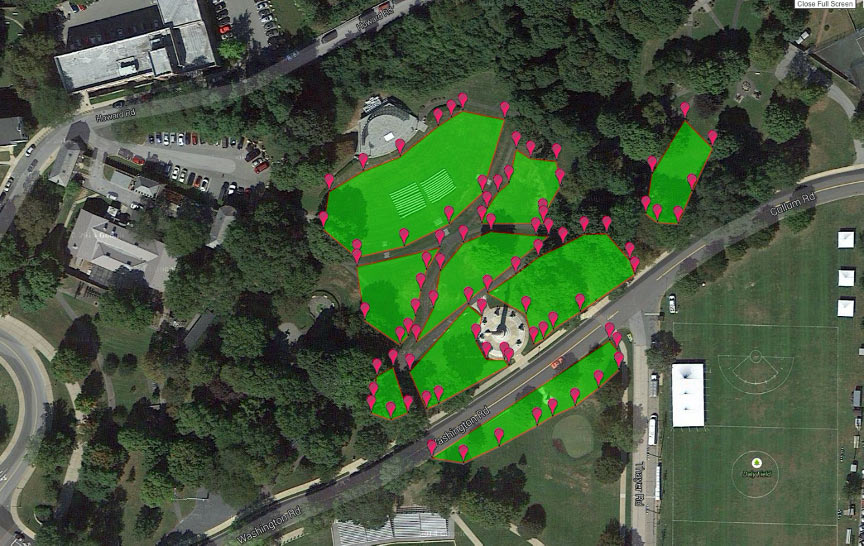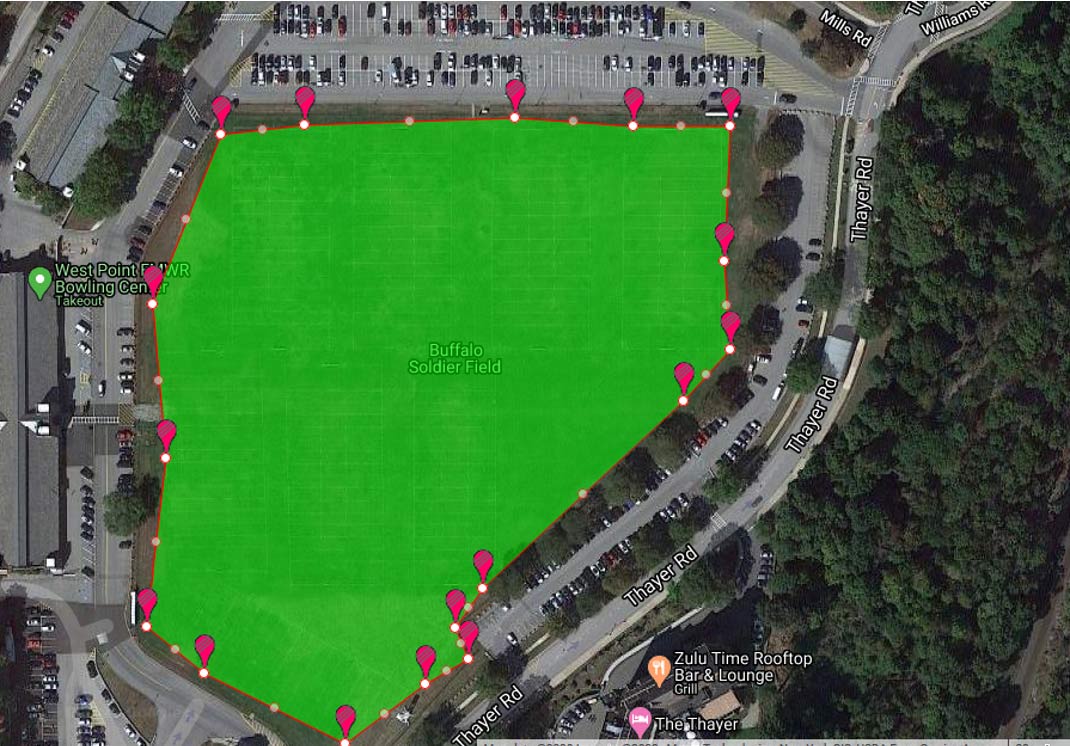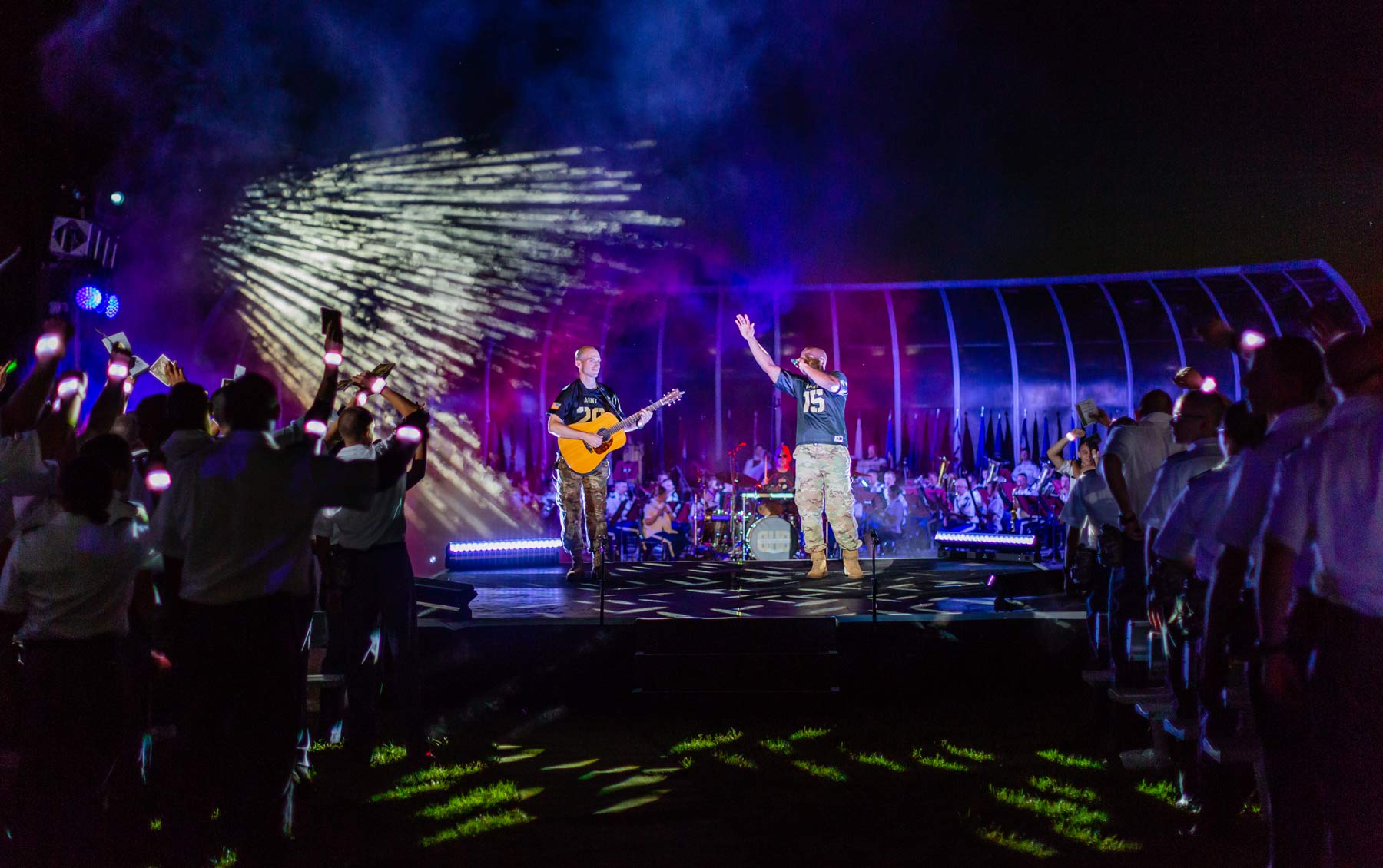
As the summer of 2020 continues, musicians and concert lovers continue to assess what live shared experiences will look like. They range from one-on-one personalized concerts, or the use of an earlier convention - drive-in’s, as advocated by Live Nation.
At the West Point Music Research Center, we study the impacts of shared experiences such as live outdoor concerts. We believe there is a path forward, as daily conditions warrant, to use familiar tools that incorporate social distancing mitigation to ensure a safe and memorable concert going experience. One such way is applying the Jacobs Method to some of the West Point Band performance locations.
Easy and effective:
The Jacobs Method was derived by Herbert Jacobs while at his office in Berkeley California during the 1960’s. Mr. Jacobs conceived of a way to estimate audiences/crowds based upon a grid-like system. Once the grid was conceived, he would estimate the number of students in each space based upon density. Performing organizations can easily apply the Jacobs Method to not only count crowds but understand what distribution of audiences at various physical distances would mean for overall attendance.
Methodology
The West Point Music Research Center used photographs from the Cadet Basic Training Concert (July 4th, 2014 and other more recent concerts) to outline the areas populated by audience members and to ascertain density at peak attendance times.
By utilizing map overlays segmenting the audience space into specific areas, we used Draft Logic software (http://www.daftlogic.com/projects-google-maps-area-calculator-tool.htm)to give us the size of the areas populated during the Cadet Basic Training Concert. This resulted in 82,659.75 feet² of audience space utilized or 1.9 acres.

Applying Jacobs Method, we can assume a light crowd density at 1 person per every 10 square feet,a dense crowd at 1 person per every 4.5 square feet, and a ‘mosh-pit’ density of 1 person per every 2.5 feet. As the pictures show a moderately dense crowd is reasonable except in the front area where cadets are seated at an interval closer to 1 per 2.5 feet. (Image source: Google Maps)
Taking a conservative approach, we applied Jacobs Method at a crowd average distribution of 1 person per 5.5 square feet. This is more than generous for blanketed areas and offset by the very close Cadet population.This results in a crowd estimation of 15,029. If we increase the measurement to a “less dense” model of 1 per every 10 square feet (which is clearly too large based on photographic evidence) the crowd count would still be at 8,265.97. This number is considered a low estimate number giving confidence that the Cadet Basic Training Concert attendance was in the 10,000-15,000 range.

COVID-19 Application:
Current (26 June 2020) CDC guidelines for "physical distancing" recommend at least 6 feet of distance between individuals. A physically distanced audience at West Point’s Trophy Point area would be a maximum size of 2,296 people, if not extended onto other athletic fields. The concert could take place with this smaller audience or an alternate location could be used. One alternate location is West Point’s Buffalo Soldier Field.
West Point’s Buffalo Soldier Field was named in honor of the men of the 9th and 10th U.S. Cavalry Regiments. The plaque dedicating the Field is mounted at the corner of Thayer and Mills roads, and depicts the history the two units.
The field is rather large and flat, roughly 393,665 square feet. With the CDC recommendation of 6 feet of distance between people, a performance could support an audience of roughly 11,000.

Future Information
After consultation with West Point‘s Department of Geography and Environmental Engineering, it is agreed that with additional time, new software and surveying techniques could more specifically track size, population density and distribution. The methodology outlined above shows due diligence and conservative estimation for the areas documented with photographic evidence. These techniques are easy to use and are available as open source.
Practicality
Live shared experience events are special for several reasons, but often what makes it special is the people with whom we choose to share the experience. Based upon an assumption of a typical family of four, we recommend allotting them 10 square feet of space and then a border of conditions-based space (ex.6 feet). Here are two free online resources: Social distancing space calculator (12 ft grid to allow for movement) designed by the Colorado Department of Public Health & Environment and the Colorado State Emergency Operations Center. Banquet Tables Pro made an easy to understand and use “Social Distancing Room Space & Capacity Calculator for distances of 6, 7, 8 and 12 feet apart.
The West Point Music Research Center does not imply endorsement of any product through these recommendations.